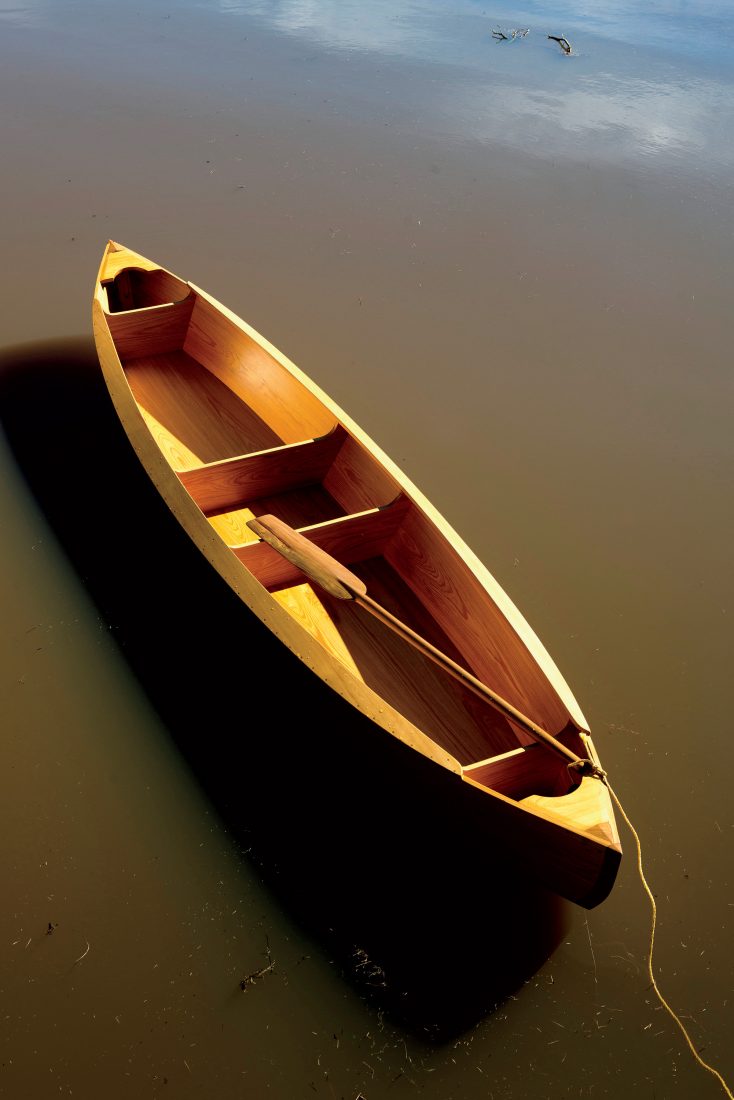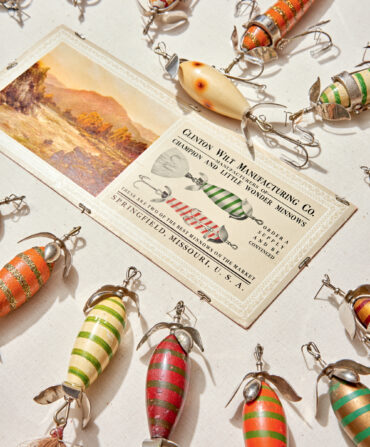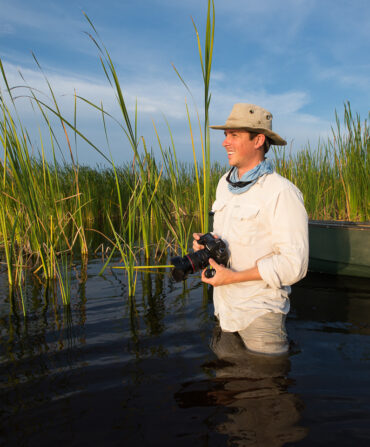The boats took shape in the shade of an old sycamore tree, at the foot of the levee that held the swamp at bay. This was fifty years ago and better, but Tony Latiolais remembers.

Photo: Rush Jagoe
Latiolais holds up a plank of sinker cypress in his workshop.
Everybody in tiny Henderson knew that the Latiolais family built some of the finest pirogues in Louisiana. Pronounced pee-rogues, these were small, mostly one-person wooden boats—narrow, flat-bottomed, and pointed as sharp as a heron’s bill on both ends. For two hundred years, pirogues were paddled into every corner of the vast Atchafalaya Basin, filled with ducks and deer and catfish.They are as much a part of Cajun culture as Spanish moss mattresses and sassafras filé.
Latiolais, the youngest of twelve, now sixty-one, mustachioed and weathered and still as lean as the Marlboro Man, learned to build pirogues from his older brother Albert, who learned from their father, Lionel. At the time, there was nothing particularly remarkable about the boats. In the 1960s and ’70s, a hand-shaped cypress plank pirogue might sell for $150, give or take.
But times have changed.
“Hardly nobody else builds them no more,” Latiolais laments. But he does, shaping each pirogue by hand, by memory, by the feel of the wood and the lay of the grain in cypress that might have spent a century underwater.
Based on the blunt-tipped dugout canoes burned and chipped out of whole logs by Native Americans, early Cajun pirogues were made of whole cypress logs. But wholesale logging of the basin’s cypress forests made the logs harder to come by, and by the 1920s, planked pirogues had taken their place as the staple of South Louisiana. Latiolais’s pirogues are made of planks from “sinker cypress” trunks sunk in Atchafalaya Basin bayous and rivers, leftovers from the timber boom.

Photo: Rush Jagoe
Hand-carved pirogue paddles.
It takes only a few paddle strokes to understand why they are the “four-wheel drives of the swamp,” as Latiolais describes them. Run a round-bottomed canoe over a half-sunk log, and it will tip. Aluminum johnboats are too loud for sneaking up on a flock of feeding ducks. Getting into the back swamps, fanged with cypress knees, requires a boat with a shallow draft that is narrow enough to be nimble. Pirogues get the job done. They are quiet, light enough to drag over a levee, and short enough to load into a pickup truck or even a johnboat. They still have their place in the basin.
But they are growing scarce as the number of Cajun boatbuilders withers like fox grapes in the sun. Latiolais built a pirogue that was once exhibited at Vermilionville, a living history and folklife park in Lafayette. He entertained the crowd with stories of paddling the boat to fish bush lines on the river and stalk wood ducks feeding in flooded oak flats. Tourists nodded appreciatively, but it was the old-timer Cajuns who set Latiolais’s heart on edge.
“They’d look at that boat and shake their heads,” Latiolais recalls. “Now, that’s a real swamp pirogue, they’d say. They knew. They remembered.”

Photo: Rush Jagoe
The bow of a finished craft.
These days, a hand-built Latiolais pirogue might fetch $2,500 to $3,500, depending on length and trim. The wood is expensive, and it takes a week or more to build one. But Latiolais doesn’t produce boats on demand. “I don’t build them to make money,” he says, firmly. “I make ’em when I have the wood and the notion…and because I’m good at it and it’s going to be gone here pretty soon.”
Latiolais has two grandsons who live nearby, about the age he was when he first started out under that old sycamore tree. But even he realizes that a good future won’t be found in an old boat. “I want them to go to college, not build pirogues,” he says, invoking the swamp’s one constant. “Everyt’ing changes. There’s no dinosaurs running around these days, you know.”
Thankfully, he’s not shelving the hand planers just yet. Latiolais has big twenty-four-inch-wide planks of cypress drying at his workshop. After milling, the planks have to dry an entire year for each inch of thickness. These boards will be ready soon, ready for sunlight and sandpaper, ready for the rough hands that will shape them into the one vessel that bears the Cajun soul deep into the natal woods of the basin.
For more information on Tony Latiolais’s Pirogues , E-Mail JWALKER017@Centurytel.net.








